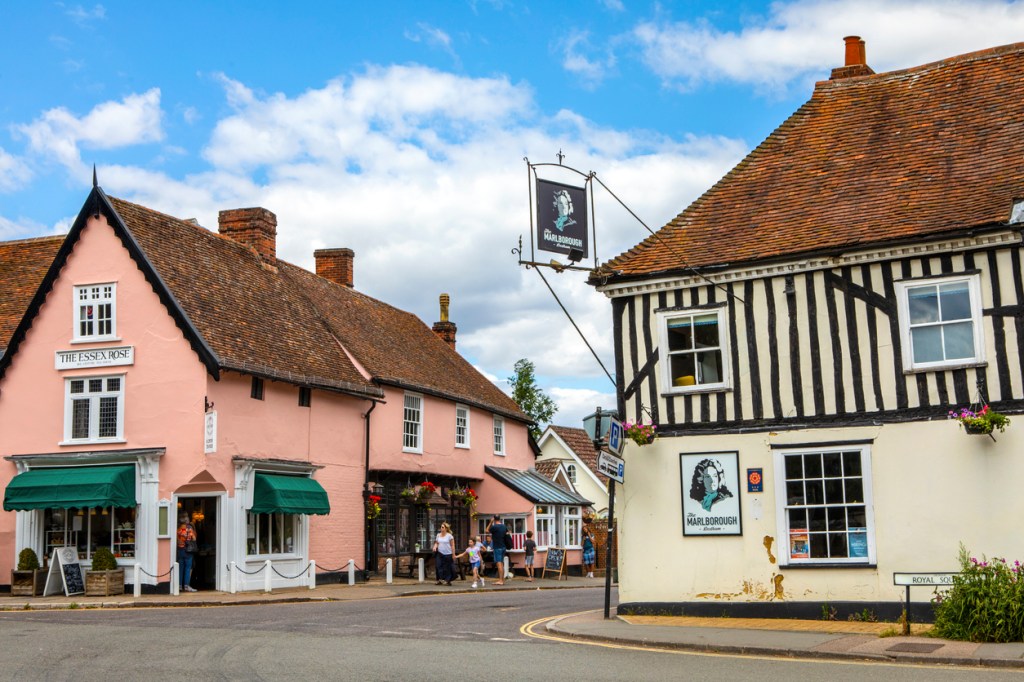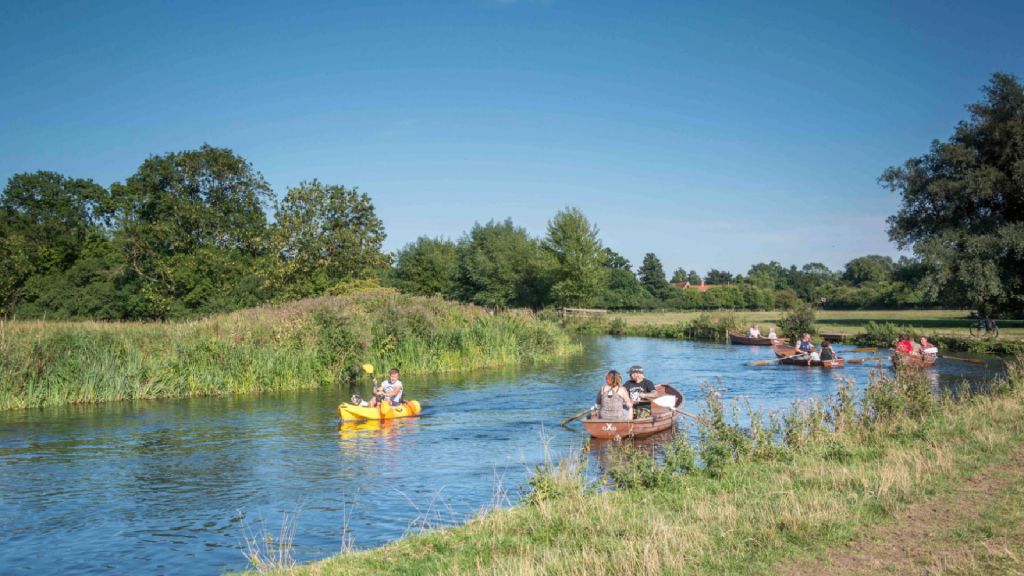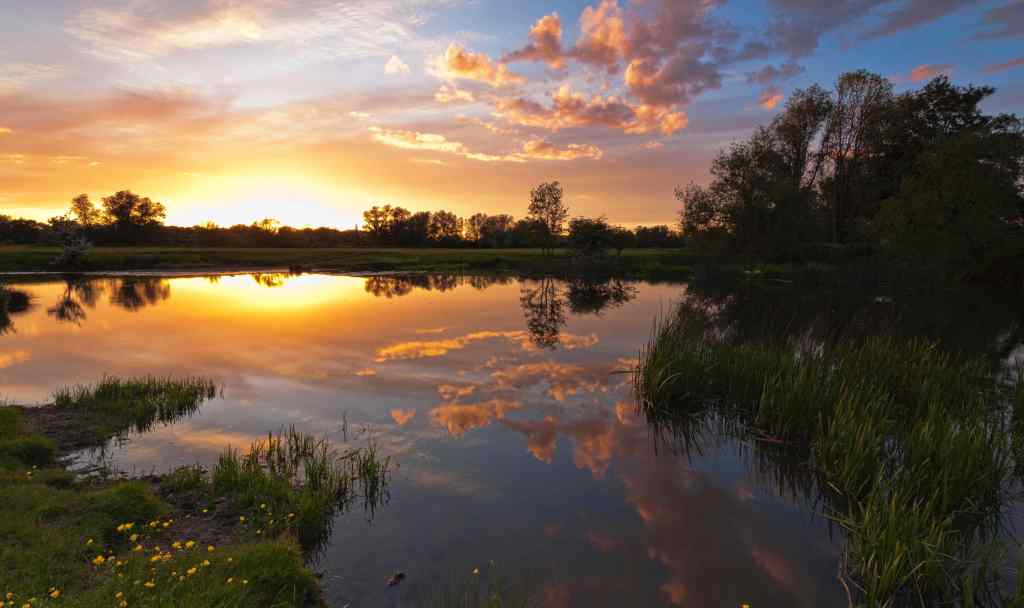There is a point on the dreaded A12 – a road so soulless it makes the M4 looks like Shangri La – when you reach the end of Essex. If you’re driving from London it takes you a surprisingly long time; there’s a lot of noisy beige concrete to go over – about 60 miles’ worth – with roadside highlights including a large, sad-looking ‘adult shop’ that was clearly a Happy Eater or Little Chef in more innocent times, and dejected-looking service stations with alarming short slip-roads. Then of course there are lorries galore thundering along, laden with shipping containers bound for Felixstowe, Britain’s happiest sounding port. Heading east you’ll pass signs for places like Basildon, Billericay, Brentwood, Chelmsford, Clacton and Southend-on-Sea.
This northern fringe of Essex and southern portion of Suffolk have arguably more in common than the rest of their parts
But before you actually cross the finishing line and arrive into Suffolk, there’s something you should know. The fact is, you’ve already left Essex, probably about 15 minutes ago. That’s because between the long administrative border of Essex and Suffolk there is another place, one I call Suffex – a liminal borderland where north Essex and south Suffolk meet, and which is its own place altogether.
And Suffex is no afterthought, nor is it a refuge for those people who don’t like to admit that they live in Essex (‘I live on the cusp of Suffolk’ etc). No, it’s a real place. It’s a place populated by quintessential English towns such as Dedham – a broad meandering Georgian high street with wisteria and painted houses, a river and a flint church the size of small cathedral with its own Constable. I dare say you’ll know it, but Dedham is the reason they invented biscuits, so they could decorate tins of them with pictures of it. (It also has the stunning Munnings Art Museum, which is well worth a visit.)
Suffex is replete with thatched hamlets like Lamb Corner, or picturesque villages like Higham, Boxford or Stoke-by-Nayland, which has the finest little bookshop and a petrol station with one pump. It boasts provincial market towns such as Hadleigh where you can imagine Henry Fielding, periwig and all, striding merrily along the thoroughfare in his buckle shoes, or proud Sudbury, where they still weave silk – as they have done for 700 years since the days of Edward III – and they have a mini-National Gallery all of their own dedicated to their local boy made good, the painter Thomas Gainsborough.

And Sudbury gives a clue to the geography of this no-man’s-land – because it’s close to the start of the navigable section of the River Stour which rises in Cambridgeshire and runs south through Sudbury, then on to Dedham and Manningtree before spilling out into the River Orwell and the North Sea at Harwich. The Stour, of course, is the historic northern boundary between Essex and Suffolk, but its valleys and shared landscape unite rather than divide this territory.
It’s a reality reflected in public services, too – notably with the East Suffolk and North Essex NHS Foundation Trust which controls hospitals either side of the border in Ipswich and Colchester. The Football Association even has an Essex and Suffolk Border League (Dunmow Town and Tiptree Heath are riding high), which has been going strong since 1911.

And if it’s good enough for the health service and the Football Association, who are we to quibble? Indeed, Natural England, a quango, identifies a swathe from Bury St Edmunds through parts of Hertfordshire and Essex down to Ipswich in Suffolk – the so-called South Suffolk and North Essex Clayland National Character Area, no less – as ‘an ancient landscape of wooded arable countryside with a distinct sense of enclosure… of a gently undulating, chalky boulder clay plateau, the undulations caused by the numerous small-scale river valleys that dissect the plateau’. It adds: ‘There is a complex network of old species-rich hedgerows, ancient woods and parklands, meadows with streams and rivers that flow eastwards. Traditional irregular field patterns are still discernable over much of the area, despite field enlargements in the second half of the 20th century.’
Sounds rather nice, doesn’t it? And the bucolic epicentre of this landmass is the Dedham Vale Area of Outstanding Natural Beauty – which is beautiful despite the bureaucratic nomenclature, and, of course, straddles the Essex-Suffolk border, a place known to most as Constable Country, after the artist who made canvas and oil paint do things that no one had managed before thanks to the inspiration of its sheer arcadian bounty.

Just along from there, however, on the other side of the River Stour from where I live, is the Shotley Peninsula, just inside Suffolk and often voted the best place to live in Britain. It’s sandwiched by the Orwell and Stour – a site of special scientific interest thanks to its birdlife that’s seen the two rivers managed together since the 1990s. Again, this reflects the reality on the ground, as well as the briny water.
So let us not be divided by the Saxon kingdoms or the Heptarchy, more than a 1,000 years after their pomp. This northern fringe of Essex and southern portion of Suffolk have arguably more in common than the rest of their parts, joined by rivers and even A-roads (the A14 being another major offender). Together they offer an undulating landscape of grassy meadows, where the branches of ancient trees kiss overhead, where at summer roadsides sprout blue borage and are scarlet with poppies, where muddy estuaries are thronged with playing children at low water, and timber-beamed pubs stand the test of time. It’s a place where people have eaten oysters since the Romans, where barges lay askew on dried riverbeds and where, quite possibly, the last great fortunes were made in wool under the Tudors. Welcome to Suffex, a secret place that requires its own name. And now it’s got it.







Comments
Comments will appear under your real name unless you enter a display name in your account area. Further information can be found in our terms of use.